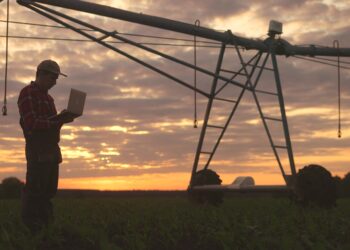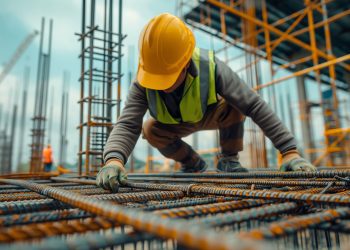Infrastructure has been an unsung hero of the COVID-19 crisis. Despite the complete disruption to how our economies operate and how we live our lives, infrastructure key workers have ensured the operation of critical services including power, water and most transport systems- true to its word infrastructure has literally kept the lights on throughout the pandemic.
We have seen innovative infrastructure solutions in response to COVID-19 including the rapid development of medical facilities and adaptive use of space (such as hotels transformed into housing facilities for those displaced by travel restrictions and unemployment). We are also seeing escalated roll-out of connectivity solutions as working, socializing and shopping habits become virtual and social distancing requires digital means of accessing, paying for and maintaining infrastructure.
In addition to keeping the lights on, infrastructure is being looked to by governments to play a key role in their recovery strategies. Many are calling for shovel-ready projects that can help to stimulate economic growth as the global economy faces what some are calling the worst economic recession since the second world war.
What do we mean by shovel-ready in the current context of COVID-19? Government clearly plays a key role in fostering an environment that enables the escalated development of infrastructure. This is discussed in my recent podcast – A path to green economic recovery – where I share my views on what governments should be doing now to rebuild economies in a way which is sustainable and resilient.
“Embracing PPPs, reducing permit and selection processes and leveraging tax credits and exempt bonds to attract investment are all tools that governments can deploy to accelerate local projects.”
Peter Oliver
Head of Australian Tax
KPMG in Australia
Now let’s also look at this at the project level and what it means for a project to be considered shovel-ready in this new reality. What are the enablers that can best place projects for selection? What are the outcomes that governments should look for in these projects to deliver both immediate and long-term benefits, and what is the role of investors in this prioritization process?
Contextualizing shovel-ready projects in light of COVID-19
Shovel-ready is a phrase much used by politicians keen to be able to be seen to act fast in stimulating their economies through infrastructure investment. . It is usually associated with projects that have been through the required planning and approval processes and can initiate construction upon securing investment. It also refers to projects that will have immediate impact on employment rates and the economy.
Identifying shovel-ready projects in the context of COVID-19 however, requires a broader range of considerations both at the project management level and the promised outcomes of the project on society.
What are the enablers to best placing your project for prioritization and selection?
In addition to the standard robust project planning expected for a project to be classified as shovel-ready the COVID-19 pandemic has raised additional critical factors that need to be addressed – for a project to be shovel ready it now needs to be COVID-19 relevant and pandemic proof.
Some questions to consider in the selection process include:
- Does the project have procedures in place to protect the health and safety of workers, those in the local community and involve support plans in case of local outbreaks?
- Has the project assessed the risk of disruption to supply chains and increased cost of materials due to potential disruption from COVID-19?
- Has there been an assessment on the risk of disruption to labour – whether local or overseas labour?
- Has there been consideration of any regional or sector capacity constraints in an environment where workforces are downsizing?
- Is the project able to withstand the uncertainties that COVID-19 is inflicting on the construction market, containing thorough COVID-19 specific risk assessments, scenario planning and robust response plans?
- Are procurement processes fit for purpose where the objective is to get shovels in the ground quickly?
- Are contractual models that pass significant risk across to the private sector appropriate, where the objective is speed and contractors’ balance sheets are already under pressure?
- Does the project contract contain a contingency plan for potential COVID-19 related delays, temporary closures and clarity of force majeure vs expected managed risk?
- Is there sufficient transparency and communication in place to maintain stakeholder confidence in a volatile market?
- Do the projects have a clear link to local economic growth and will they enhance resilience and sustainability?
- For emerging markets, are these projects affordable to the government and can they be delivered through the private sector?
“For a project to be shovel-ready it now needs to be COVID-19 relevant and pandemic proof.”
Helen Oxenbridge
Global Infrastructure Senior Manager
KPMG in the UK
Outcome-based prioritization and selection
We also need to consider the promised outcomes – in both the short and long term – against existing risks to society, continued risk of COVID-19, and the emerging requirements of the new reality of the world as a result of the pandemic. The emphasis on project outcomes is especially key in some developing markets where an increased focus on project preparation and a strong ESG criteria are likely to be critical to limiting project and financial risk – all the more so in times of COVID-19.
Short term considerations include:
- How quickly will these projects generate local employment and economic growth?
- Is this economic stimulus going to reach the places and the people that need it the most?
- Is the project able to operate in ongoing restrictions enforced by COVID-19?
- Long term considerations include:
- Is it fit for purpose in the new reality, as the shape of our cities starts to change, as the movement of people contracts, and as people’s lives become more virtual?
- Does it address the social needs of communities, offering inclusive and long-lasting employment and upskilling opportunities to those who have lost their jobs from the pandemic or through other global trends like digitization?
- Does the project link to current government priorities for society, for example improving outcomes for indigenous people?
- Does it act to mitigate imminent threats such as climate change by being in line with sustainability targets and the Paris Agreement?
- Does it boost resilience and the ability to flex and brace against changing demographics, rising populations, increasing extreme weather events and future pandemics?
- Will it be able to adopt new and evolving technologies and remain a functioning part of an increasingly interconnected infrastructure ecosystem?
- Does the project facilitate the emergence of new supply chains that mitigate challenges currently faced by traditional ones?
“With significant disruptions to projects and massive strain on government and corporate balance sheets, it is even more important to prioritize effectively. Well-developed projects will continue to be attractive, provided they can also contribute to inclusive economic growth, resilience and sustainability.”
Sarah Owen-Vandersluis
Partner
KPMG in the UK
“Governments should consider not only what is being built but also for whom. Assessing shovel-ready projects based on who is the end beneficiary is critical to establishing objectives and realizing the benefits of the project.”
Omar Raza
Senior Executive, Global Infrastructure Advisory
KPMG in Canada
Balancing key considerations and speed to market
Whilst consideration of all these factors is important, there is also risk in overlaying too much analysis or complexity at the project assessment stage at the cost of quick decision making. A robust and clear prioritization methodology which also recognizes the environment we are in, is key.
Developing a framework that allows comparison between projects in a range of sectors, regions, with different benefits is complex. Project selection should link to underlying policy objectives and target those most impacted by the COVID-19 pandemic.
“It is crucial that we find the right balance between considering all of these factors whilst recognizing that in the current environment, a key objective is speed to market.”
Jesse Phillips
Partner
KPMG in New Zealand
What is the role for investors in prioritization?
The global cost of COVID-19 has been estimated by the Asian Development Bank1 to be between US$5.8-8.8trn, and as high as US$82trn based on a recent study by Cambridge University.2
Regardless of the precise figure, the financial implications are clearly significant, particularly in emerging markets that may have been in financial difficulty even prior to the pandemic, where governments alone have little capacity to fund projects and corporate balance sheets are strained. As the World Economic Forum argued in their recent publication encouraging greater use of unsolicited proposals,3 increased innovative private sector participation and the support of multilateral development banks will be key.
Infrastructure players will need to get creative by increased use of innovative finance solutions including blended finance, sustainable innovation funds, and green bondsto unlock capital to the right projects.
Investors can also influence the type of projects that are re-prioritized through robust ESG criteria and the development of targeted funds.
“The challenge for governments in emerging markets is not to limit infrastructure delivery to projects that are viable through user fees. There must be cross-subsidies and other innovative funding solutions that allow for projects (such as social infrastructure or urban mobility projects) that are developed to address the needs of the more vulnerable. This is critical to avoid growing inequality coming out of this crisis.”
Fernando Faria
Deputy Head of KPMG Impact and Latin America Head of Infrastructure
KPMG in Brazil
In summary
There are many aspects of our lives today that remain unpredictable as we cope with the ongoing effects of COVID-19. Infrastructure projects need to be able to withstand this uncertainty in order to be viable and to deliver long term benefits. Robust business case assessment, risk mitigation andproject management can help ensure that the projects promising the most benefits to a post COVID-19 world are prioritized.
Increased participation of the private sector in developing, funding and delivering projects can help to increase the efficiencies needed at a time where resources are stretched. Collaboration, connectivity, risk sharing, investment and a deep alignment with the needs of evolving societies – while addressing current concerns about the impact of this crisis on inequality – can help ensure that infrastructure not only keeps the lights on, but paves the way for societies that are reinforced by sustainable and resilient growth.
Courtesy KPMG/By Richard Threlfall Global Head of KPMG IMPACT and Global Head of Infrastructure












